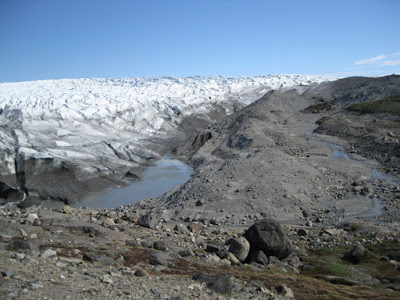
Albedo modification, an emerging technology with the potential to offset some aspects of climate change, shouldn’t be counted on as a short-term solution to stop rising global sea levels, according to a new study from Penn State geoscientists.
“In the short term, the first few decades to the first century after you start doing albedo modification, it’s not as effective in avoiding sea-level rise from the Greenland Ice Sheet as you might think,” said Patrick Applegate, a research associate in Penn State’s Earth and Environmental Systems Institute. “The rate of sea-level rise goes down, but sea-level rise from the ice sheet doesn’t stop.”
Researchers used computer model experiments to test how the Greenland Ice Sheet would react to albedo modification, also called solar radiation management geoengineering, a proposed technology to cool down the Earth’s temperature by reflecting some sunlight away from the planet. They found the ice sheet might contribute to sea-level rise for decades to centuries after albedo modification began.
The findings, published this week in the journal Environmental Research Letters, provide a nuanced picture of how albedo modification might affect future sea-level rise, and build on a previous study that looked at the effect of albedo modification on the Greenland Ice Sheet over a much longer period of time.
“There has been one other study that used broadly similar methods, but they looked at really long timescales,” Applegate said. “Many people are also interested in what happens over the next few decades or centuries, so we zoomed in on shorter time scales for our study. And there you get a very different answer.”
The researchers looked at a three-dimensional ice sheet model that included some important feedbacks.
One such feedback is the size of the ice sheet itself. The Greenland Ice Sheet is like a tall, white mountain. Its height means it’s much colder at the top of the ice sheet than at sea level. If the ice sheet has already partly melted when albedo modification begins, the cold area at the top might be smaller, making it harder to save the ice sheet by reducing temperatures.
The Greenland Ice Sheet contains enough ice to raise global sea level by about 24 feet if the sheet were to melt entirely. If that were to happen, many people who live near present-day sea level would be at risk of being displaced by flooding.
“Albedo modification is not something that can be done locally. That means the world community has to make some kind of analysis of the costs versus the benefits of albedo modification,” Applegate said. “We argue that the benefits may be smaller than we thought.”
Note: The above post is reprinted from materials provided by Pennsylvania State University.










